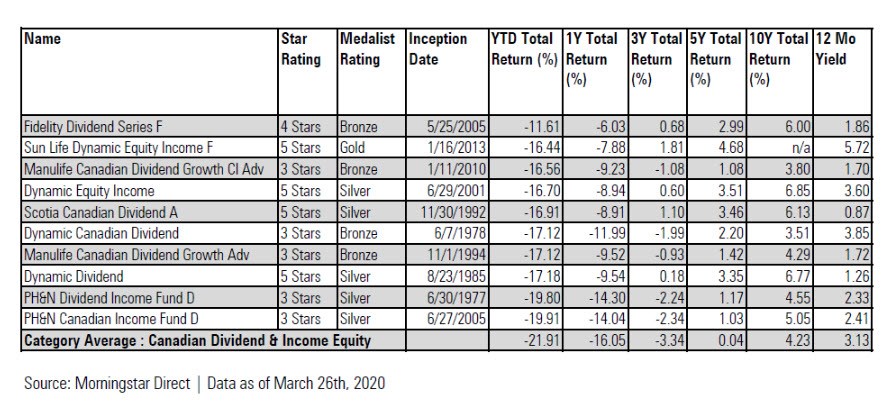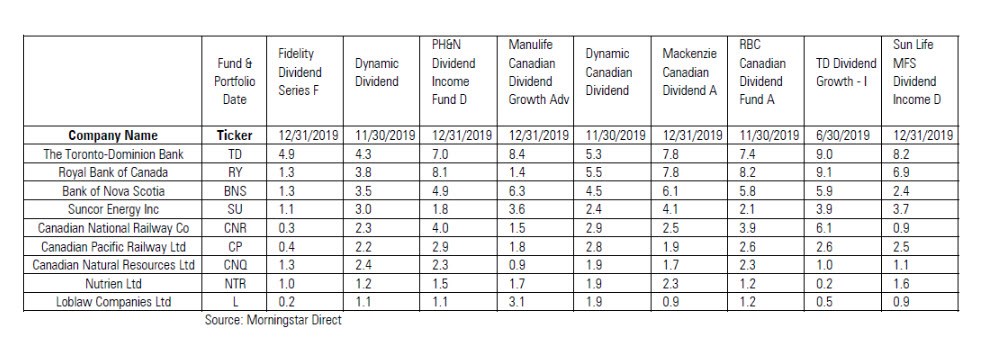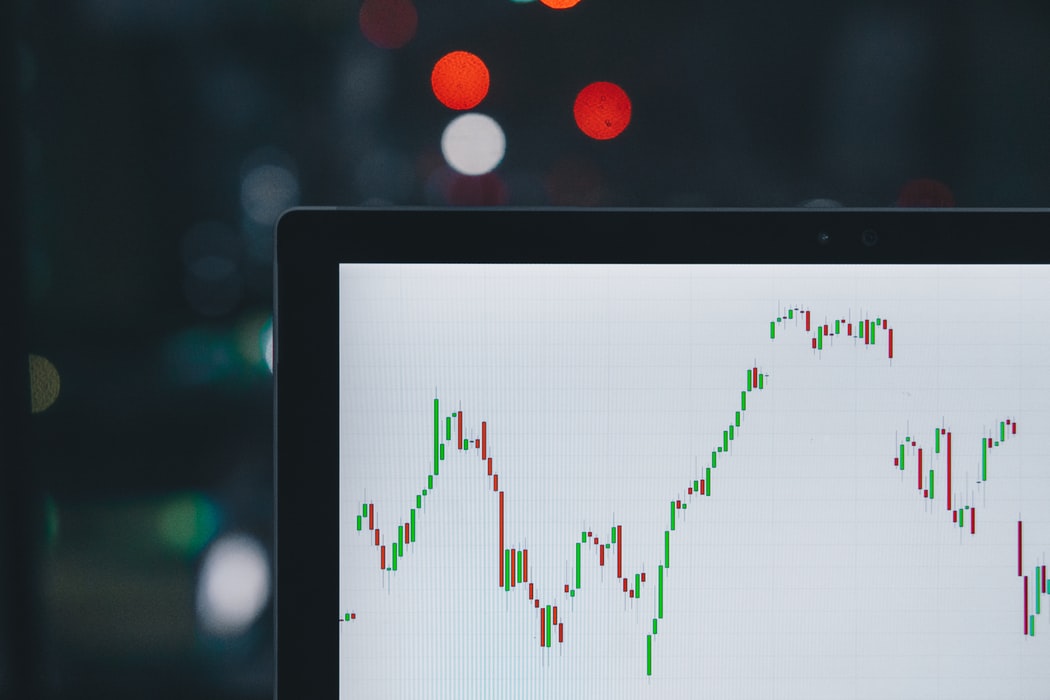
Since February 20th of this year, saying that equity investors have had a rough ride is an understatement, and though dividend paying companies are viewed as more conservative, even they have not been immune in the recent downturn. That said, for long-term investors that feel that these steady companies will continue to be staples within their portfolio, I look at the best performing dividend income funds within Morningstar’s database to understand what they are holding. Here are ten medalist rated dividend income funds that are outperforming the S&P/TSX Composite Dividend Total Return index on a year-to-date basis.

Although all funds have a negative year to date performance, that behavior should not be unexpected during these turbulent times. For ideas within your own equity portfolio, here are the common holdings amongst these funds at the end of last year as well as the percentage of each portfolio represented by the holding.
It is no surprise that these funds hold many large cap blue chip names. Remember that mutual fund managers not only have to look for quality companies, but also must deal with the added constraint of being able to buy/sell stocks quickly and in large quantities, and hence will likely stick to more liquid companies. In addition to the holdings, here are some of the core dividend metrics for these same holdings along with Morningstar’s Star Rating and Moat Rating:
Remember that a star rating for stocks is an indication of how far away the price of the stock is from Morningstar’s fair value estimate. A stock with five stars is deemed as undervalued, while a stock with a one-star rating is considered overvalued. Morningstar’s economic moat rating centres around a company’s sustainable competitive advantage. Morningstar’s analysts see five distinct sources of economic moat: network effect (when the value of a company’s service increases for new and existing users as more people use the service); intangible assets (such as patents, brands, regulatory licences); cost advantage (for example, being able to undercut competitors on price while earning similar margins); switching costs (when it would be too troublesome to stop using a company’s products); and efficient scale (when a niche market is effectively served by one or a small handful of companies).
This article does not constitute financial advice. It is always recommended to speak to a financial advisor or investment professional before investing.



















